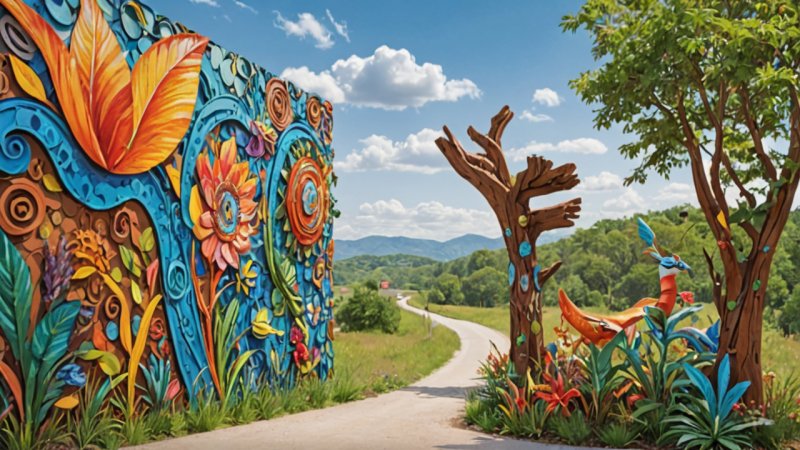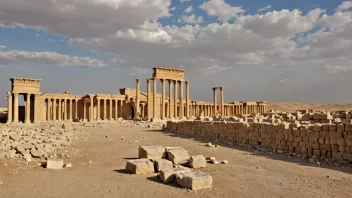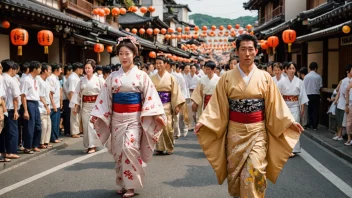In a world increasingly aware of environmental issues, the intersection of art and eco-friendly travel presents an innovative avenue for promoting sustainable practices. To delve into this fascinating topic, we hypothetically interviewed Dr. Elena Greenfield, an art historian and environmental activist renowned for her efforts in using art as a medium for raising awareness about ecological sustainability. Dr. Greenfield's fictional insights provide a thought-provoking exploration of how art can influence travel behaviors and inspire eco-consciousness among travelers.
Art as a Catalyst for Change
Interviewer: Dr. Greenfield, can you explain how art serves as a catalyst for promoting eco-friendly travel?
Dr. Greenfield: Absolutely! Art has a unique power to transcend language and cultural barriers, allowing it to communicate complex ideas in a relatable way. When artists engage with environmental themes, they can evoke strong emotional responses that compel viewers to rethink their travel habits. For instance, installations that highlight the impacts of plastic waste on marine life can encourage travelers to adopt more sustainable behaviors, like reducing single-use plastics during their journeys.
Art Installations and Eco-Tourism
Interviewer: Are there specific art installations or movements that have significantly impacted eco-tourism?
Dr. Greenfield: Yes, several projects have gained traction in recent years. One such initiative is the “Plastic Ocean” installation, which showcases the staggering amounts of plastic found in our oceans. It has inspired eco-tourism by attracting visitors to coastal areas who are eager to learn more about marine conservation. Additionally, the “Earth Day Art Walks” in various cities feature local artists and environmentally themed works that raise awareness about conservation efforts, transforming urban spaces into platforms for sustainability education.
Engaging Local Communities
Interviewer: How does art help engage local communities in eco-friendly travel initiatives?
Dr. Greenfield: Art fosters a sense of community and belonging, which is essential in promoting eco-friendly practices. Artists often collaborate with local communities to create murals or sculptures that reflect the area’s natural beauty and cultural heritage. This not only beautifies the space but also instills pride among locals, motivating them to protect their environment. Travelers are drawn to these authentic expressions of culture, which often include messages about sustainability, prompting them to consider the environmental impact of their visit.
Educational Workshops and Eco-Art
Interviewer: Can you elaborate on how workshops and eco-art programs contribute to eco-friendly travel?
Dr. Greenfield: Workshops provide hands-on experiences that educate participants about sustainability through art. Programs where travelers can participate in creating art from recycled materials or engaging in community clean-up projects are incredibly impactful. These experiences not only raise awareness but also foster a deeper connection to the destination, urging travelers to become advocates for eco-friendly practices in their own lives.
Social Media and Digital Art
Interviewer: In this digital age, how do social media and digital art influence eco-friendly travel?
Dr. Greenfield: Social media platforms are powerful tools for sharing art that promotes sustainability. Artists can reach a global audience, spreading messages about eco-conscious travel instantly. Digital art, such as graphic design and animations, can illustrate the consequences of climate change or showcase positive environmental initiatives. When these pieces go viral, they can inspire thousands to consider their travel choices more carefully and opt for greener alternatives.
Challenges and Future Directions
Interviewer: What challenges do you foresee in the role of art in promoting eco-friendly travel?
Dr. Greenfield: One significant challenge is the risk of commodification. As eco-friendly travel becomes more popular, there’s a danger that the genuine messages behind the art may be diluted for commercial gain. Additionally, not all art resonates with all audiences; what moves one person might not impact another. It’s crucial for artists and activists to remain authentic and grounded in their messages. Looking ahead, I believe we will see more collaboration between artists and scientists, merging creativity with data to create compelling narratives that inspire action.
Conclusion: Art as a Sustainable Travel Advocate
Dr. Elena Greenfield’s insights shed light on the profound role art plays in promoting eco-friendly travel. By engaging emotions, fostering community connections, and utilizing modern platforms, art serves as a powerful advocate for sustainability. As travelers become more conscious of their impact on the environment, art will continue to inspire them to explore responsibly, ensuring that the beauty of our planet is preserved for future generations.






